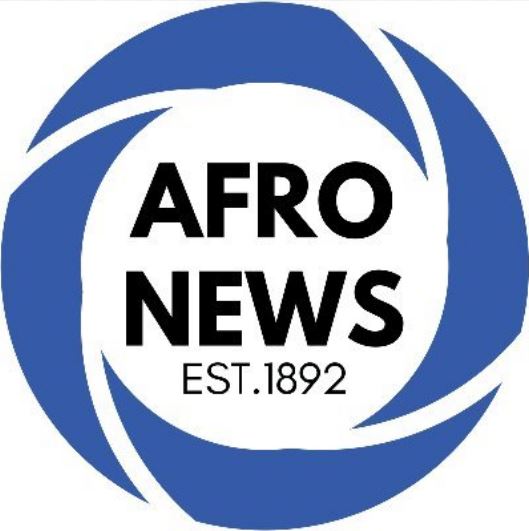

Theresa Marshburn was much more than a crossing guard for students bounding down Eutaw Street in the 60s. The community organizer and activist dedicated her life to serving and improving the lives of Baltimore youths and their families. In 1971 Eutaw Elementary was renamed Eutaw-Marshburn Elementary in Theresa Marshburn’s honor.
By Alexis Taylor
Special to the AFRO
“Richard Montgomery was a slave owning general whose claim to fame was a failed invasion of Canada during the American Revolutionary War.”
The Change.org petition filed by the students and stakeholders of Richard Montgomery High School in Rockville, Md. is clear.
“RM High School students deserve a namesake that truly represents them, and while Richard Montgomery may have his place in history, he no longer deserves a place on the front of our school.”
Few parts of society have been left untouched by the waves of change washing over the country in the wake of the murder of George Floyd and Breonna Taylor.
Cries for equality and justice in 2020 have toppled more confederate statues and sent Aunt Jemima into retirement. “No-knock warrants” are being re-evaluated and avenues across the country now read “Black Lives Matter.”
As the Fall semester kicks into high gear, the focus has once again switched back to schools. This year it’s all about the name game- and having “former president” on the resume isn’t garnering sympathy anymore.
In Detroit, teachers of the Cornerstone Schools decried the practice of a system that blends the monikers of a slave-holding president with that of a prominent former slave or Black history figure.
Rosa Parks has her name on a building- but only after former president and slave holder George Washington, creating Washington-Parks Academy.
In an August 2020 letter to their CEO, teachers working at these schools explained why the names of former slave-holding American presidents must be removed.
“Their legacies are deeply rooted in the soil of racism and separatism and should be replaced with the names of founding fathers who advocated for civil rights and fought to bring about the demise of traditional racial customs and norms,” reads the letter.

Furman L. Templeton Preparatory Academy honors the civil rights activist who used his time as leader of the Baltimore Urban League to improve education for Black students.
The teachers said the school building names that pay homage to slave-holding former presidents must be “replaced with the names of men who worked diligently to cleanse the stain of racial bigotry and bias from the American fabric of cultural equality and inclusion.”
This year’s fervor is not new.
In 2018, a group of Washington, D.C., students successfully rid their school building of the name tied to slave holder and former mayor Benjamin Grayson Orr. They believed their own story was more honorable. Mayor Bowser cut the ribbon on Lawrence E. Boone Elementary School on Aug.18, 2018, named in honor of the man who served as the school’s first African-American principal.
Other notable Black history figures honored by District of Columbia Public Schools (DCPS) include activists Ida B. Wells and Malcolm X. The late D.C. Superior Court Judge Luke C. Moore, who was known for serving justice and giving back to the community, also has a school named in his honor.
The spotlight in the Baltimore City Public School System also shines equally on the giants and lesser-known heroes and sheroes of Black history.
The Baltimore City Public Schools System (City Schools), like DCPS, honors the likes of Dorothy Irene Height, who served as national president of both the National Council of Negro Women and Delta Sigma Theta Sorority, Inc.
There are buildings named in honor of Black Panther Angela Y. Davis and civil rights activist Lillie May Carroll Jackson, who led the Baltimore chapter of the NAACP from 1935 to 1970.
Astronauts Mae Carol Jemison and Guion Stewart Bluford Jr. had their names merged in the creation of Bluford Drew Jemison STEM Academy West, a school for boys in middle and high school.
Attorney George W. F. McMechen, the first graduate of Morgan College, is honored with a high school in his name and a building on the campus of what is now Morgan State University. Furman L. Templeton Preparatory Academy honors the civil rights activist who used his time as leader of the Baltimore Urban League to improve education for Black students.
Dr. Nathan Alvin Pitts also has an edifice named in his honor. The diplomat led the social science department of what is now Coppin State University, and later served as chief of the Division of International Education with the federal Department of Education.

Born a slave, Booker T. Washington rose to become one of the most prominent men of his day with the 1881 founding Tuskegee Normal and Industrial Institute, now Tuskegee University.
Though these names are more prominent in history books, BCPSS has also diligently sought to honor lesser-known heroes such as Calvin M. Rodwell, who served the Baltimore Police Department for 13 years before his shooting death on Sept. 22, 1973.
Baltimore school buildings tell the story of Joseph Cornelius Briscoe, the beloved principal of the Colored Vocational School, and Theresa Marshburn- who was much more than a crossing guard for students bounding down Eutaw Street in the 60s. The community organizer and activist dedicated her life to serving and improving the lives of Baltimore youths and their families. In 1971 Eutaw Elementary was renamed Eutaw-Marshburn Elementary in Theresa Marshburn’s honor.
“It is important that we have names that respect our humanity, the humanity of the students, and the history that they come from,” said Angela Alvarez, the executive director of City Schools’ Office of New Initiatives. “Students should feel proud and represented by schools that serve them.”
Within the Baltimore City Public Schools System there are a total of 158 schools. Of that number, more than 25 schools are named directly after a prominent Black figure or use some portion of their name.
Alvarez clarified that some programs have a name that is different from the actual building they are housed in. For example, the Sandtown-Winchester Achievement Academy name was chosen by the community when William Pinderhughes and Gilmor Elementary combined. Though the two schools have combined, the building housing the new program is still called the George G. Kelson Building.
While Baltimore City has done well in remembering the legacy of both popular and lesser known Black leaders, there are some controversial names on the list.
In a district that is 76 percent Black, scholars are asked to proudly say and wear the names of men who would have considered them property. Tench Tilghman, William Paca, James McHenry, Commodore John Rodgers, and former president George Washington all have buildings named after a legacy built from the business of human trafficking.
“It is problematic and it’s something that we have to wrestle with in our school communities,” Alvarez told the AFRO. “Two years ago we adopted a racial equity policy in City Schools around disrupting systemic institutional racism within our practices.”
“We recognize that institutions like school systems have perpetuated these things and we are attempting to disrupt that in a meaningful way.”
According to the City Schools Comprehensive Educational Facilities Master Plan, community members can submit a request to their school leader to name or rename a building. If the request is denied, stakeholders are entitled to a meeting to find out why and can appeal. If school administrators sign off on the request it is then submitted to the CEO, who in turn asks board members for a vote on the new name.
Alvarez said that when a new building or school needs a moniker, focus groups are first asked to consider names of schools that have closed. Geographic location, important moments in the community’s history, and the values held by suggested historic figures are all considered.

Though they’re a little too young to vote for president, students of Edgecombe Circle will have a choice to make in less than a week. Ballots will be cast on Election Day to select a new name for their program and spaces within their building.
Some names, such as that of Frederick Douglass High School, are so ingrained in the community that it would be hard to imagine a city without them.
“We expect to have Douglass around for a long time because it is an important school – it’s important to the history of our city,” said Alvarez. “That is the reason we have selected it to be part of the next phase of the 21st Century School Buildings Program – to get that redesign and construction.”


